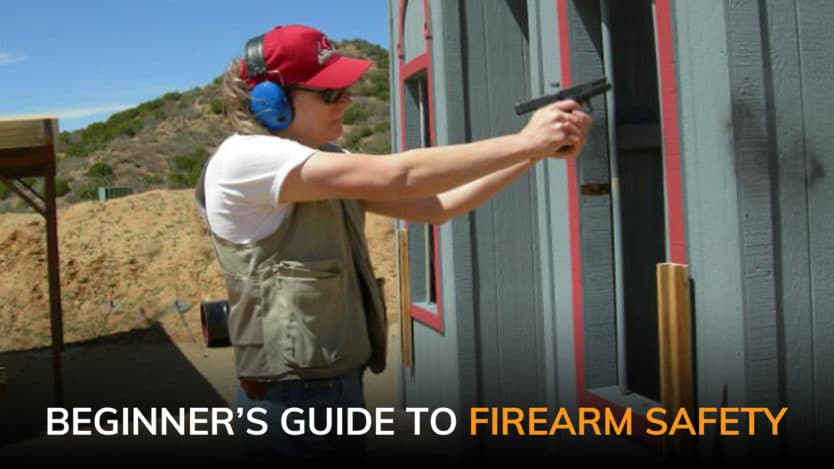Firearms are fantastic. They can help you put food on the table, have the time of your life, and protect your family. A lot of gun owners treat them as collectors’ items and love tinkering with them, but firearms are not toys. They are weapons that are designed to kill. Firearms are also a tangible symbol of our freedom. Freedom is power and with great power comes great responsibility.
Gun Safe Tips 101
Many of our readers have thought about purchasing their first gun safe, and after exhaustive searches comparing everything from gun capacity to the number of locking bolts they have made their purchase. The problem is that once you pay for the safe and take it out of the store no one cares about it anymore. There are some “after purchase” tips that we have learned the hard way and decided to pass on to our readers. Some of these tips will be common sense and some might be things you overlooked or never thought of. There’s no 100% absolute way to do any of this, just ideas we learned along the way.
Tip #1: Remembering the Combination.
This may sound sacrilegious to some but remembering an endless string of numbers sometimes sucks. Think about it you have to remember your debit card number, social security number, passcode for work number, wife and everyone else’s birthday, the password and numbers for bank accounts, retirement accounts…The list goes on forever. Most of the time we have these numbers securely stored in a book or folder in the house, but how often have you ever wrote your gun safe number down someplace? Many of the people I asked think this is a form of gun heresy.
More than once I stood in front of my gun safe and drew a complete blank, thank god my wife was home so I could ask her the combo. Im not an ancient man (42 years old isn’t that old) but I decided that I had to have a way to remember it in the “Oh Shit” moment or in case and my wife needs in the safe when I’m dead or incapacitated. To me, the easiest way is to store the combo in a secret place in the house. This trick is as old as hiding the house key under the welcome mat, but with a modern twist. It’s simple but it works, and the only people that need to know where that combo is hidden would be the people who matter the most.
So before you buy, you may want to consider looking at Biometric Gun Safes
Tip #2: Fight the Moisture
Most people when they get a new gun safe put it in their garage or basement, well in areas of the country that have the luxury or having a basement. The problem with these places is that they are usually cool, dark most of the time and can get relatively damp or chilly at certain times. Places like the basement or the garage are perfect places for trapping moisture in things, and a gun safe makes a really nice and inviting moisture trap.
This trapped moisture cools and becomes condensation which settles on guns and gear and turns quickly into a gun’s worst enemy, RUST. This is a real battle in some areas of the country, but it doesn’t have to be for your gun safe. There are both passive and active easy ways to combat this infestation of moisture. The cost level and complexity that you chose to employ is totally up to you, but here are a few of the things we have found that are effective in our experiences.
- Electric Dehumidifiers (Commonly found at Lowe’s, Home Depot, Bass Pro Shops etc)
- Refillable Silica Gel Cans
- Silicone Gun Socks (Claims vary on effectiveness)
- Open Can of Baking Soda (Ghetto Method but will work for a short time)
I personally use a method of silica gel cans and electric dehumidifiers or “goldenrods”. I have a great deal of time and money invested in my gun safe and my firearms collection and wont skimp when it comes to protecting them for the elements.
Here is our review on the best gun safe dehumidifiers
Tip #3: Secure Your Safe
Securing your safe in place with proper anchors is as much about safety as it is security. A safe weighing between 500 and 700 lbs unloaded can be tipped over, often with less force than you might think. If you happen to live in earthquake country then you know that when things begin to shake they move around, generally a good deal more than you expect them to. Now image that safe with all your guns falling over onto a loved one or just falling over onto the floor. It’s a giant chore to install safe when its empty, imagine trying to set it back up fully loaded. The other benefit from securing your safe to the floor is protecting the most vulnerable part of the safe from attack, and that is the bottom.
One of the features most people tend to forget about their safes is that the bottom of the safe is generally the thinnest part and offers little to no insulating qualities. There are two issues to worry about here, the first being that if a burglar wants the easiest route to your guns with an unsecured safe all they have to do is tip it over and cut through the much thinner bottom material. The less aggressive problem that shows up in gun safes is corrosion of the bottom of the safe due to moisture. Even with the above moisture control tools in your safe you can still have the bottom of your safe face serious corrosion issues. The best method to combat this that we have found it to provide your safe with a barrier between it at the surface under it.
The goal here is to make some form of gap or moisture barrier between the floor of the safe and the concrete floor its resting on. If you can find a way to slightly elevated your safe and still keep it secured this would be best. Doing this will allow air to circulate around your safe preventing moisture from getting trapped under neath it. I have seen people make a 2″x4″ frame with pressure treated wood frame under their safes and use slightly longer anchors through the steel bottom and the 2″x4″. Other methods that you can try are laying down a roll on style epoxy resin as a chemical barrier or doing what I did and finding a 1″ thick section of High Density Polyethylene board and securing the safe to the barrier and into the concrete slab.
Tip #4: Buy Bigger Than You Need
It should go without saying, buy the highest capacity gun safe you can afford if it meets your basic requirements. Going cheap or buying one of the small Homak Wal-Mart brand gun safes maybe good for a short term fix but it’s not a viable long-term option. A gun safe is an investment in your firearms and the protection of your personal property, it’s not the most glamorous purchase you are going to make but it might be one of the smartest. One thing that seems to be a universal constant is that other people in your family like your wife, in laws or children will always want you to store something in your safe. That extra annoyance and loss of space of storing other peoples stuff or non-gun-related items is why you need to buyer much bigger than you think you will need.
In closing I would like to say that when you start shopping for a safe, remember to shop around and take notes on prospective models you are looking at. All safes will look alike in short order after looking at 20 or more safes in the selection process, keep a notebook. Also don’t forget little things like the door-mounted handgun sleeves like the one in the picture will help add flexibility to your purchase. Personally, I would avoid models that have rifle racks on the door. Remember the old adage, buy once cry once, buy the right safe the first time, trust me on that one.
If we here at The Arms Guide can help you in your search for a safe let us know, I think most of the writers will tell you what safe they have or what attributes they find important with safe selection without violating any sort of OPSEC/COMSEC rules.
The 8 Best Long Gun Safes To Protect Your Weapons
Hunter Education Courses Are A Great Idea
As gun owners, we have a responsibility to ourselves, our families, our hunting partners, and everyone around us to handle our firearms with the utmost safety. The more accidents happen involving firearms the more of an excuse adversarial political forces have to chip away at our 2nd amendment rights. Handling your weapon safely not only keeps you safe, but it also helps keep everyone’s freedom safe.
In some states, a permit or license is required to purchase a firearm, particularly a handgun. The process usually involves some safety training. Most US jurisdictions that allow concealed carry require a permit that involves safety training. Even if it is not a legal requirement, a hunter education course is always a good idea to cover the bases of firearm safety.
If you’re new to firearms, you’re going to start to hear seasoned shooters refer to the four or five golden rules of firearm safety. Exactly how many golden rules there are and how they are phrased varies from source to source. We’re going to look at seven:
- Treat all firearms as if they were loaded.
- Always keep your firearm pointed in a safe direction.
- Keep your trigger finger outside the guard and off of the trigger until you are ready to fire.
- Be certain of your target, your line of fire, and what lies beyond your target.
- Use the correct ammunition.
- Always wear appropriate eye and ear protection when shooting and maintaining your firearm.
- Keep your firearm unloaded when not in use and secure it from unauthorized use.
8 Rules Of Firearms Safety In Depth
Rule One: Treat All Firearms As If They Are Loaded
This is a vital rule, that’s why it’s number one. You never want to get complacent with guns. The mentality of ‘it’s okay, it’s unloaded’ is a slippery slope to someone getting shot by a negligent discharge. That’s the term for a gun going off when it shouldn’t. A firearm is a tool designed to kill and it should be respected as such at all times. That one time you let your guard down because you’re sure it’s unloaded is sure to be the time that the worst happens. Many of the later rules are contingent on rule number one.
Rule Two: Always Keep Your Gun Pointed In A Safe Direction
Never point your weapon at a person, animal or article of property that you don’t want to be destroyed. Keep the muzzle pointed down at the ground when not flagging a target. Be careful when maneuvering in groups, adjusting the position of your weapon, or passing it to others. No matter what you’re doing, don’t point it at anyone.
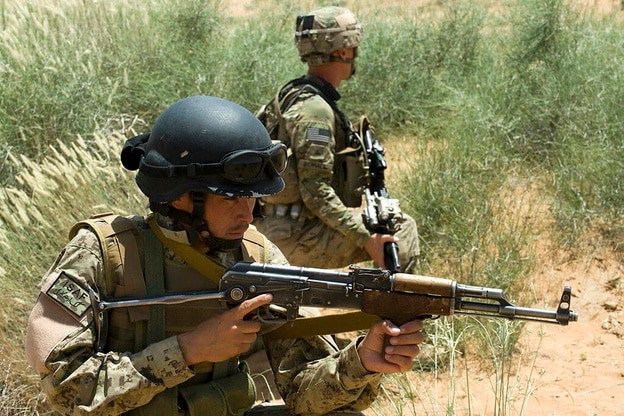
Rule Three: keep your finger off the trigger and outside the trigger guard until you are sure that you are ready to shoot.
Practically all firearms have a safety mechanism but you should never rely on it and become complacent. Complacency is the leading cause of death, whether we’re talking about how much fried chicken you eat or how you handle your firearms. Stay vigilant. You can identify a professional shooter because they keep their finger straight, resting across the side of the trigger guard and off the trigger until it’s time to rock and roll. It’s unlikely though not impossible for a firearm to go off if nothing has touched the trigger. This is one of the key ways to avoid a negligent discharge.
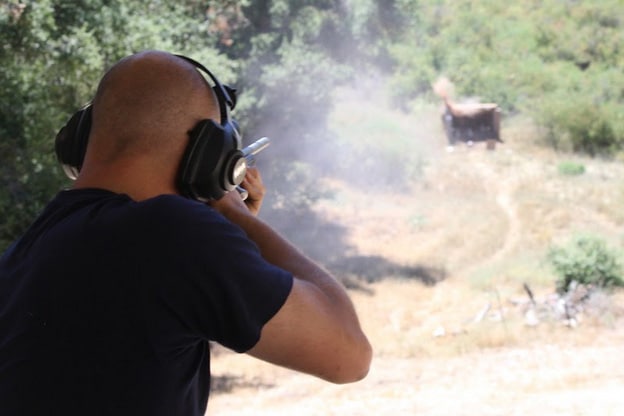
Rule Four: be certain of your target, your line of fire, and what lies beyond your target.
So, it’s time to rock and roll. You have something you need dead in your sights and you want blood. But wait. Are you sure the target is what you think it is? A rustling dark figure in the bushes could be a buck or it could be your bud. Can you say with 100% certainty that you have a clear view of what you’re targeting and you have positively identified it? The ‘well, what else could it be’ mentality could land you in prison or worse. Besides, is there some distracting movement in the foreground? Don’t be too eager to take your shot that you neglect to check if something or someone could stray into your line of fire. You can always shoot another buck but you can’t bring your bud back to life.
So, a pronghorn is skylining on the top of a hill and you have the shot of a lifetime, right on his vitals, a sure, ethical kill. Nope. If that bullet goes sailing through the animal or you flub the shot (happens to the best of us), chances are that the bullet is going to travel on to God knows where. If you don’t know what is behind your target, it could be your bud, or maybe a group of girl guides on a camping trip. Never take a shot at a skylined animal.
The same principle can apply in home defense. If you don’t know who is behind the wall, you better think twice about taking that shot. In this scenario, knowing about over-penetration, that is, how many objects your projectiles can go through after passing through an assailant, is key.
situational awareness – remembering the old saying, that every bullet has a lawyer attached to it.
You are legally liable for every round that comes out of your barrel and where it lands. Of course, if things go really wrong, the grief could be even worse than the legal penalty.
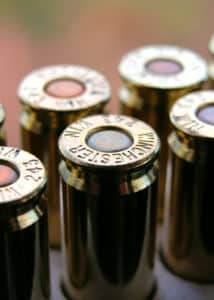
Rule Five: Always use the correct ammunition for your weapon.
An exploding barrel can rip you in half, and that’s what you can expect if you try to use the wrong ammunition for your firearm. Every firearm you come across has a barrel stamp that tells you exactly what kind of ammunition it is made for. Commercial ammunition that matches your barrel stamp is generally safe for use. There are a few things to keep in mind.
America’s most popular rifle, the AR-15, usually comes in 5.56x45mm NATO, which is nearly identical to .223 Rem. You can shoot .223 in a 5.56 gun but not vice versa. Note that the caliber name on your barrel and your box of ammo must match exactly. .380 ACP and .38 Special is not ‘close enough.’
Another minefield is the world of reloading and wildcat rounds. If you don’t thoroughly know the physics involved in developing your own rounds, or the person providing wildcat rounds to you doesn’t, stick to store-bought.
Shotguns are also complicated when it comes to cartridge compatibility. Besides the bore size, usually measured in gauge with shotguns, different guns are compatible with different lengths of cartridge. The most common are 12 gauge 2.75″ cartridges. However, 3-inch cartridges and longer are available, particularly for goose hunting. Cramming one into a 2.75″ gun can be dangerous. Besides, shotguns have chokes that narrow the muzzle, the business end of the barrel. Most but not all lead slugs are made to deform and fit safely through different chokes. If you try to shoot a steel slug out of a ‘full’ choke, your barrel could explode and kill you.
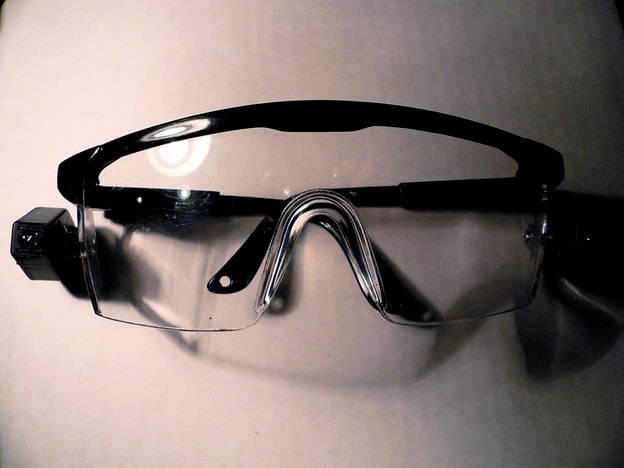
Rule Six: always wear eye and ear protection when using or maintaining your firearm.
Sure, this sounds over-precautious and a bit uncool. You don’t see everyone doing it. The cost of being a stone-cold badass is often long-term hearing damage. No thank you. You know those sleek shades all those tacti-cool security professionals always wear? Those are usually safety shooting glasses. You can get models that let you switch out the lenses for different light conditions. You may not end up using earplugs for every shot when you’re out hunting, but there’s little excuse for not using eye protection with every shot. It’s the smart thing to do, and the right lenses will help you acquire your target.
Firearm maintenance can also be a bit dangerous. The chemicals used are often highly corrosive, poisonous or flammable, various maintenance procedures can result in injury, and little bits and grits can go flying into your eye, so it’s best to play it safe.
Firearm maintenance is also key to safety. Maintenance is how you prevent misfires and bore obstructions, which are often the causes of accidents. Keep your weapons clean and well maintained at all times. It keeps you safe and protects your investment.
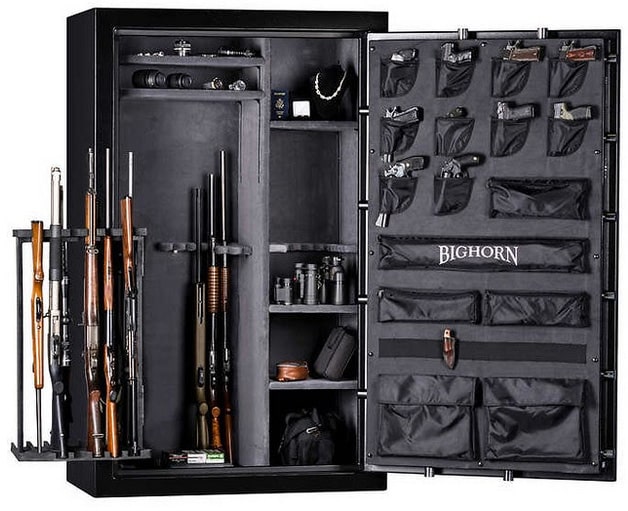
Rule Seven: Keep Your Firearm Unloaded When Not In Use And Secure It From Unauthorized Use
Some people do keep firearms loaded and at the ready for personal protection purposes. If you do, you should have a specialized system. Don’t just leave a loaded shotgun leaning against a door frame unless the is nothing and no one around that you don’t mind accidentally sporting a pie-tray sized hole. You need a secure case, holster or another method of safekeeping to prevent an accidental discharge.
If your primary use case for your weapon is not personal protection, the best practice is to keep your firearm unloaded and locked in a case, ideally a safe, with the ammunition locked away separately. This helps to prevent children, idiots, or intruders from living out the proverb, ‘curiosity killed the cat.’ Besides, the last thing you want is a villain getting access to your own gun and using it against you.
What to do if you experience a misfire
If you have a round in the chamber with the safety off, you pull the trigger and nothing happens, maintain muzzle control. Do not peer down the barrel like Elmer Fudd. Sometimes a faulty cartridge could experience a delay before firing. While you’re scratching your head and swinging the gun around there’s a good chance it will suddenly go off. If you decide to check that there is no obstruction in the bore, do it from the chamber end, not from the muzzle. Most firearms offer an easy way to do this.
It’s always a good idea to check the bore before operating a weapon. When one shooter passes a firearm to another, he or she should unload and check the bore first, and the receiver should also run their own check. If you’re tromping through the woods there’s always a chance the muzzle snagged the ground in an absent-minded moment and got blocked with a clump of dirt. That can kill you and/or your buddy.
Other considerations
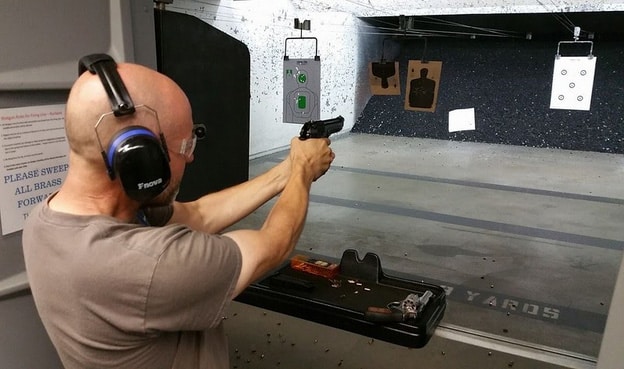
Each gun will have its own unique safety features and safe handling recommendations. Read the manual and get as familiar as you can with your weapon. The more training and practice you have, the safer you will be able to handle your weapon. You should be able to operate your weapon safely through sheer instinct and muscle memory. That takes time and practice. Follow the rules above, hit the range as much as you can, and surround yourself with responsible, experienced shooters and stay safe!

